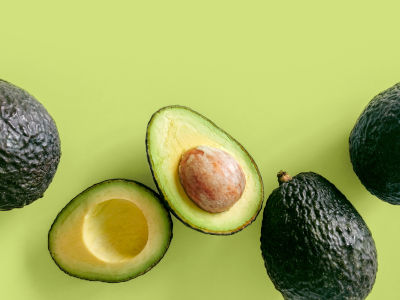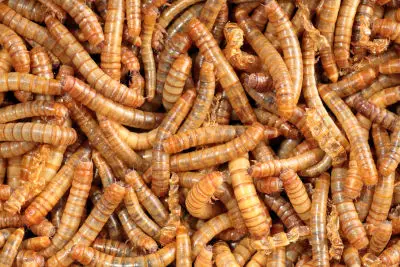Are Skink Lizards Poisonous? (Wish I knew it Earlier)
If you have ever seen a skink, you may have wondered if they are poisonous. Or maybe saw the blue tongue on one of their popular species, and thought they must be dangerous. I had similar thoughts, but I will now clear up some of the myths.
Are Skinks poisonous? No, they are not poisonous. Neither are they venomous. For some reason, some people are quite superstitious and rumours have led people to believe that they are dangerous, poisonous or even venomous. In fact, they are really not that dangerous at all.
| Are these foods dangerous for your Beardie? | |
| Avacado? Click here to learn, from this guide, if this food is dangerous |  |
| Superworms? Click here to learn, from this guide, if this food is dangerous |  |
Now that you know that they are not poisonous or venomous. I will now explain what skins are, how they defend themselves. The most popular species and much more.
What are skinks?
The Skink is a lizard from the Scincidae family. Its family holds some of the most diverse species of lizard. Some of these skinks have normal lizard features. However, there are some confusing species such as Typhlosaurus, that literally look like they are a snake, instead of a lizard.
For this reason, some people tend to get them confused and mixed up with completely different animals.
Now let me give you an idea of some of the most common stinks out there:
- Keeled skink: The Keeled Skink is from Asia and also found in northern parts of Australia. It is one of many common skinks out there.
- Sand Skinks: This species of skink is quite interesting. It is also known as the “sandfish”. The reason it is called this is because of his bizarre capabilities of being able to sift it’s way through sand. It uses its scales and toes to cut through sand like butter.
- The Snake-eyed Skink: Has bizarre eyes. In particular, it has fixed plates on its eyes instead of moving eyelids, meaning when you look into its eyes it’s as if it never blinks. Unfortunately, because of its stand-out features, it is often captured in the wild and sold on the black market to people that want to sell them on as pets.
How do skinks defend themselves?
Obviously, there are many different species of skink, however, if we focus on the blue-tongued skink, it has a very noticeable way of defending itself. It uses its blue tongue to confuse and intimidate its prey.
It’s contrasting blue tongue in its pink mouth causes its predators to think twice about attacking it (Do Blue Tongue Skinks Have Teeth? (Will it Bite?) – Click here).
Other techniques that are used, beyond this, is the ability to flatten its body and make-up undesirable hissing sounds. This is to fend off any oncoming predators.
Failing this it will use its vicious bite which has quite a lot of pressure. It can cause a lot of pain and injure its opponent.
Are skinks good pets to keep?
Yes, they are good pets. Over the last few years, they have become quite popular as pets. This is mainly because of their laid-back and friendly behaviour.
Most Popular Skink
One of the most popular species, that is usually taken as a pet, is the blue-tongued skink. This is because it has the most interesting blue tongue and good temperament.
As stated earlier it is very relaxed and well behaved. Also, it is usually quite happy to be handled, as long as you handle it correctly.
However, you need to make sure that you only pick up a captive bred skink. Because if its captured in the wild, they are not usually as relaxed and well behaved. You may find they have wild tendencies and not wanting to be handled.
Beware of Mixing Children & Skinks
Word of warning though, even if you do pick up a captive bred skink if you have them around children. Make sure they are monitored at all times. This is mainly because if they are not handled correctly, and they feel threatened, there is a chance that they may bite.
In addition to this, they may confuse your child’s small fingers as a wiggly worm. And get confused and think food that’s being offered to them. So, to avoid any of this you are strongly advised to monitor your children.
Why is the blue tongue skunk is such a popular skink?
First and foremost, their behaviour. Because they are so easy to adapt to human surroundings and able to accept being handled, they make a good pet.
Their diet
Because this skink loves eating, it makes it easier to maintain them. They are not as picky! They are omnivores, so they eat a combination of fruit, vegetables and also insects. This means that you have a lot more options to feed them and to keep them happy.
However, you need to make sure that you keep the balance right when you are feeding them. In particular, they need to be fed at least 60% plant matter and vegetation. The final 40% can be a mixture of insects, including waxworms, silkworms, etc.
Related questions:
Is the Typhlosaurus snake or lizard? It is a lizard. However, looking at it, it is understandable how it can be confusing. It is actually part of the skink family. They do not have any limbs and at-a-glance it could easily be mistaken as a snake. It is from African origins and is definitely considered at a lizard.
Are Broadhead skinks dangerous? No, there are rumours and superstitions that some skinks are dangerous. Some even get confused and call them scorpions. Some also believe they have a venomous sting. However, this is not true and is more of an urban myth.
In fact, you will find that there is no Skink in the southwestern region of the United States that is dangerous to humans or poisonous/venomous.
How big does the broadhead skink get? This species of the skink can grow up to 13 inches in length, along with the Great Plains Skink, it is one of the biggest Plestideon skinks. It gets its name from its wide looking jaw and the distinct shape of its head.
What Foods should you avoid giving to your skink? Do not feed your skink artificial based foods, or anything containing harmful chemicals such as pesticides. This can cause your skink harmful health issues. Also, avoid any artificial colouring this is also bad for them.
How much Water does a Skink Need? Generally speaking, you should be providing fresh water on a daily basis. This is because they have a tendency to get sand and other debris in their water throughout the duration of the day. So its best to refresh it every day.
Can you mix Skinks with other lizards? No, it is not a good idea. The fact is, Skinks are quite territorial and will see any other lizard as a threat, even if it’s their own kind. Obviously, if you plan to breed them, that is a different thing. But that may be the only exception.
Do you need hiding spots for your Skink? Yes, Skins need plenty of places to hide. In fact if they do not get enough places to hide, you will find that will not be happy and may even feel jumpy and anxious. So this is an absolute must.
Do they need a lot of humidity? No, not too humid. However, you need to keep the right level of humidity. If you can provide a damp substrate that should suffice. To accompany ths, you need to have the right sized water bowl. The idea is, its big enough for them to put their body in as well as drinking from it.
Do Skinks Need Lots of Space? Obviously, it depends on the individual size of your skink. There are quite a few different species to consider. But generally speaking, you need to provide as much space as your budget can stretch. Put it this way, the hatchlings will need at least 10 or even 20 gallons to feel happy.